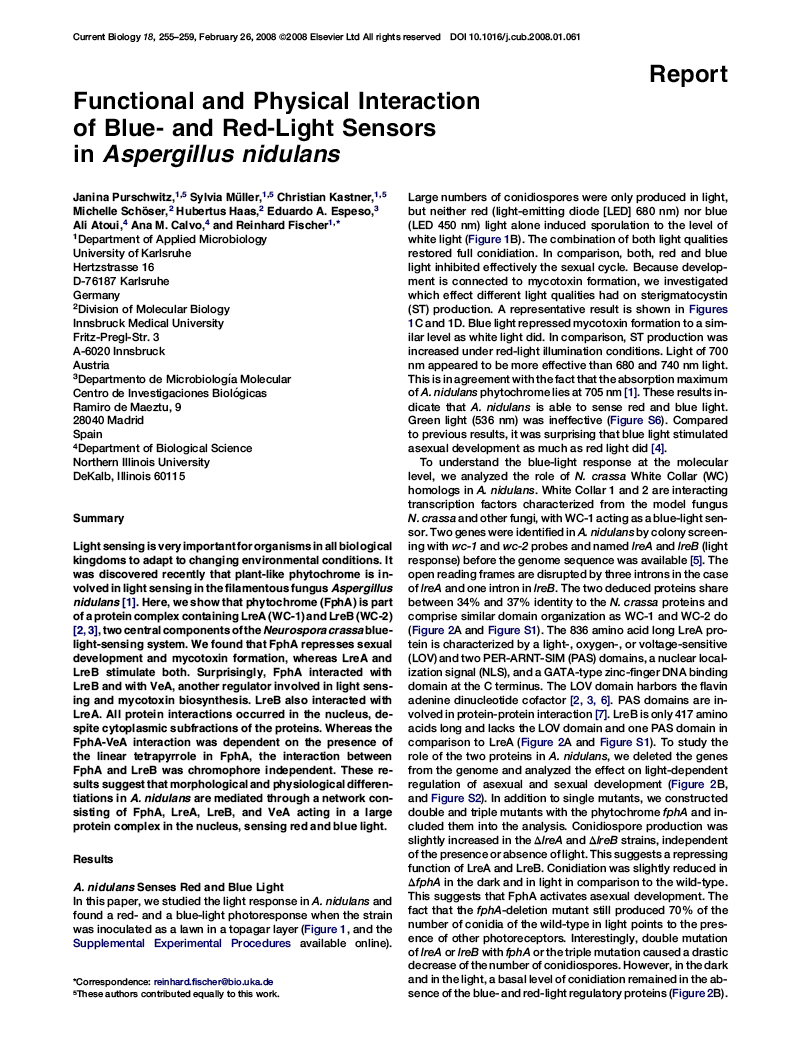Purschwitz et al. 2008
Functional and physical interaction of blue and red-light sensors in Aspergillus nidulans. Curr. Biol., 18:255-259.
Purschwitz, J., Müller, S., Kastner, C., Schöser, M., Haas, H., Espeso, E.A., Atoui, A., Calvo, A.M. & Fischer, R.
Abstract
Light sensing is very important for organisms in all biological kingdoms to adapt to changing environmental conditions. It was discovered recently that plant-like phytochrome is involved in light sensing in the filamentous fungus Aspergillus nidulans[1]. Here, we show that phytochrome (FphA) is part of a protein complex containing LreA (WC-1) and LreB (WC-2) [2, 3], two central components of the Neurospora crassa blue-light-sensing system. We found that FphA represses sexual development and mycotoxin formation, whereas LreA and LreB stimulate both. Surprisingly, FphA interacted with LreB and with VeA, another regulator involved in light sensing and mycotoxin biosynthesis. LreB also interacted with LreA. All protein interactions occurred in the nucleus, despite cytoplasmic subfractions of the proteins. Whereas the FphA-VeA interaction was dependent on the presence of the linear tetrapyrrole in FphA, the interaction between FphA and LreB was chromophore independent. These results suggest that morphological and physiological differentiations in A. nidulans are mediated through a network consisting of FphA, LreA, LreB, and VeA acting in a large protein complex in the nucleus, sensing red and blue light.

